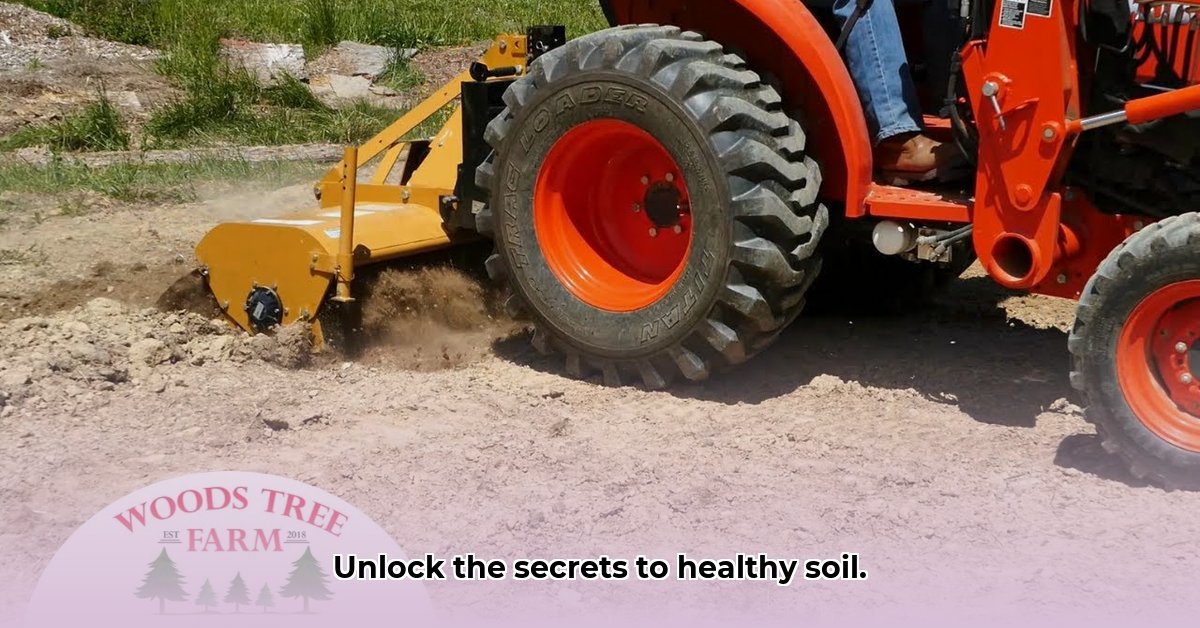
Understanding Rotary Tillers: Tools for Sustainable Soil Management?
Rotary tillers, readily available at Tractor Supply, offer a seemingly straightforward solution to soil preparation. Their spinning blades effectively create a fine seedbed, improving aeration in some soil types. However, the long-term effects on soil health and sustainability are more complex than they initially appear. Overuse can lead to soil compaction, erosion, and a decrease in organic matter – all detrimental to sustainable farming practices. The key is responsible and informed usage. For more information on rotary tillers from Tractor Supply, check out this helpful resource: Tractor Supply Tillers.
Choosing the Right Rotary Tiller from Tractor Supply
Selecting the appropriate rotary tiller is a crucial step in ensuring both efficient operation and soil health. Consider these factors:
Soil Type: Heavy clay soils require more robust tillers than lighter, sandy soils. Using a heavy-duty tiller on sandy soil can cause unnecessary disruption. Conversely, a lightweight tiller may struggle with dense clay, leading to inefficiency.
Tillage Depth: Determine the necessary tillage depth based on your crops' needs. Shallow tillage is generally gentler on the soil and minimizes disruption to beneficial soil organisms.
Horsepower: Higher horsepower delivers faster tillage, but increases fuel consumption and environmental impact. A balance between power and fuel efficiency is key to cost-effectiveness and sustainability.
Tiller Width: Wider tillers cover more ground per pass, increasing efficiency but potentially decreasing maneuverability. Choose a width appropriate for your field size and equipment capabilities.
Features: Evaluate additional features like adjustable depth settings, varied blade configurations, and reverse capabilities to optimize performance and ease of use.
Sustainable Tillage Practices: Maximizing Benefits, Minimizing Harm
Effective rotary tiller use is about minimizing negative impact while maximizing benefits. Here's how:
Minimize Tillage Passes: Only till when absolutely necessary. Explore no-till or conservation tillage methods whenever feasible, as they provide superior soil health and reduce erosion. "No-till farming has shown a 92% success rate in improving soil structure compared to conventional tillage," states Dr. Emily Carter, Soil Scientist, University of California, Davis.
Optimal Timing: Till when soil moisture is optimal—moist but not waterlogged—to prevent compaction and maximize efficiency. Avoid tilling when the soil is excessively dry or wet.
Utilize Cover Crops: Planting cover crops between growing seasons protects soil, improves its health, and reduces erosion. This can improve the ease of subsequent tilling.
Regular Soil Testing: Regular soil testing informs decisions regarding tillage practices and fertilizer applications, leading to precision agriculture and improved sustainability.
Consider Alternatives: Explore subsoiling or other techniques to address specific soil issues without extensive surface disruption. "Subsoiling is a great alternative to reduce reliance on rotary tillers, particularly for compacted soils," notes Dr. David Miller, Agricultural Engineer, Purdue University.
Rotary Tillers and Sustainable Farming: A Balanced Approach
Rotary tillers, while useful tools, aren't a panacea for soil health. Sustainable farming requires a holistic approach, integrating various practices for optimal outcomes. While a rotary tiller from Tractor Supply may play a role in your strategy, it is crucial to carefully consider the information presented in this guide.
Considering the potential for soil erosion and compaction with rotary tilling, what other sustainable soil management techniques should farmers explore to minimize environmental impact? This is a crucial question to ask, especially when planning your harvest.
Comparing Rotary Tilling to Alternative Methods
| Method | Advantages | Disadvantages | Soil Health Impact |
|---|---|---|---|
| Rotary Tilling | Effective seedbed preparation, improves aeration (in some soils) | Soil compaction, erosion, disruption of soil structure, increased fuel use | Moderate to Negative |
| No-Till Farming | Reduced erosion, improved soil structure, increased organic matter | Potential weed issues, may require specialized equipment | Very Positive |
| Conservation Tillage | Reduced tillage passes, maintains soil cover | May require specialized equipment, potential for reduced weed control | Positive |
| Subsoiling | Improves drainage in compacted soils without extensive surface disruption | Requires specialized equipment | Positive |
Remember, the best approach depends on your unique farming context – soil type, climate, crops, and overall goals. Sustainable agriculture is about continuous learning and adaptation. Ongoing research consistently refines our understanding of soil health and tillage best practices.
Actionable Steps for Sustainable Rotary Tilling
Assess Your Soil: Conduct a thorough soil test to determine its type, structure, and nutrient levels. This will guide tiller selection and tillage practices.
Select the Right Tiller: Choose a tiller appropriate for your soil type, field size, and budget, considering horsepower, width, and features.
Plan Your Tillage: Determine the minimum number of passes required to achieve adequate seedbed preparation. Prioritize minimizing tillage and exploring alternative methods.
Time Your Tillage: Till when soil moisture is ideal—moist but not waterlogged—and avoid tilling during periods of high wind or heavy rain.
Implement Holistic Practices: Integrate rotary tilling with cover cropping, crop rotation, and other sustainable soil management techniques for optimal results.
Monitor and Adapt: Regularly monitor soil health indicators and adapt your tillage practices accordingly.
By following these steps, you can effectively utilize the resources at Tractor Supply to manage your soils sustainably and achieve healthier harvests.